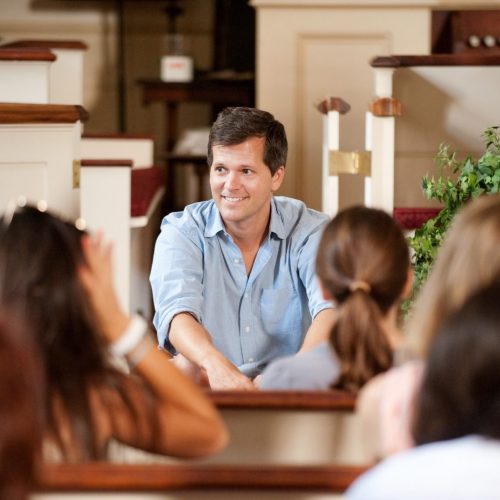
Marty Hylton is a time traveler. Sort of.
His mission is to help keep history above water by producing 3D visualizations of future sea-level rise scenarios.
According to Climate Central, by 2050 sea levels in Florida are expected to rise by 13 inches. In some parts of Florida, that figure moves closer to 3 feet by 2060.
More frequent floods are inevitable, and higher waters threaten those cultural heritage sites, historic buildings, archaeological sites and traditions that preserve human history — collectively known as cultural resources. In Florida, think: the St. Augustine historic district, Native American burial grounds and longstanding fishing traditions.
To help local governments and residents understand how sea-level rise will impact these cultural resources, Hylton is using laser scanning technology to digitally document historic urban environments and streetscapes in Cedar Key, St. Augustine and Nantucket, Mass.
He wants to invoke a sense of nostalgia and urgency by showing community members what historic buildings in their communities will look like once the water rises.
To do so, he inputs sea level rise projection data from the National Oceanic and Atmospheric Administration into his computer model and is able to produce a 3D image to show street by street and building by building, where the water line will be in the near future.
Sea level rise projections for Dock Street in Cedar Key
Images courtesy Marty Hylton.
2019

2040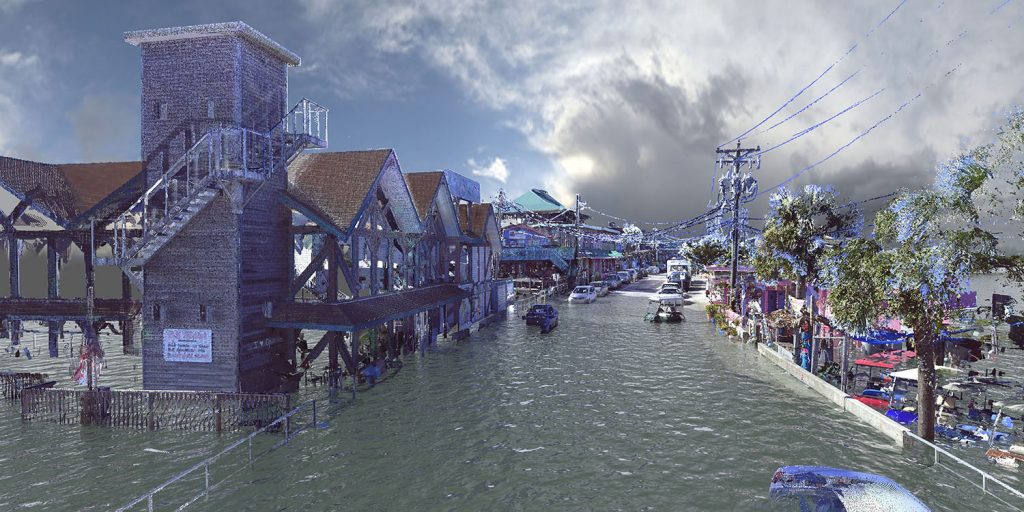
2060
2080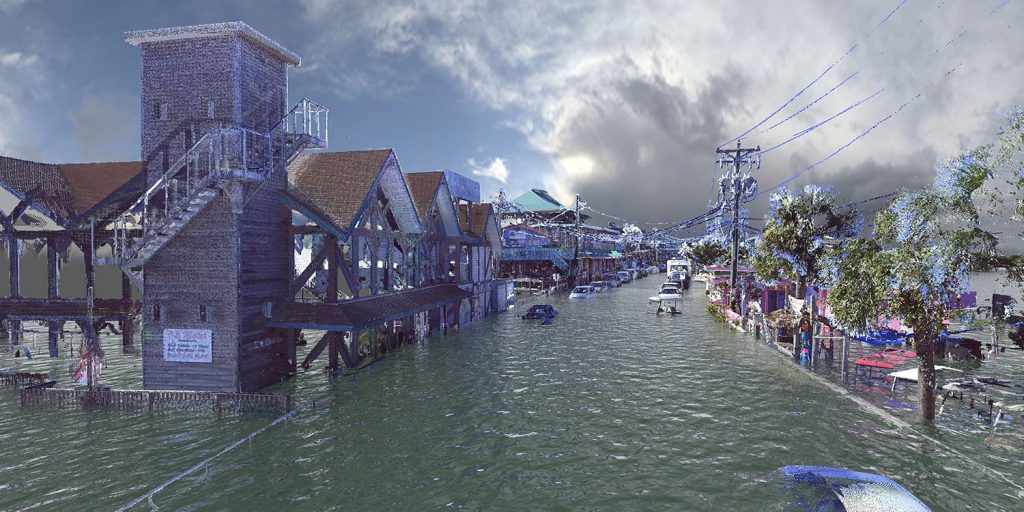
“If you see a building in these renderings that you walk by every day, and you can see where the water level is, I think that’s a much more powerful kind of communication tool,” said Hylton, the director of the University of Florida’s Historic Preservation Program.
The digital data and other products generated are also used to generate vulnerability assessments and inform adaptation strategies.
Hylton recently presented his rendering of Nantucket to roughly 150 people.
“You could’ve heard a pin drop as we walked through those visualizations,” Hylton said.
The problem is that, more often than not, emergency management planning fails to include cultural resources as a forethought. Instead, these resources are addressed during the recovery process post-disaster. For some resources, like archaeological sites, that could be too late.
These resources, unlike roads and homes, cannot simply be rebuilt.
“Therein lies the challenge,” Hylton said.
“Change is hard. We’re going to need that kind of continuity with the past as we move into this very uncertain future.”
— Marty Hylton
Belinda Nettles, a research affiliate at UF’s Center for Landscape Conservation Planning, said recovery can be especially tricky for historic landmarks.
“Cultural resources are not only damaged during disaster events,” Nettles said. “Studies and experiential evidence indicate that cultural resources have sustained further damage during recovery efforts.”
It’s better to prepare ahead of time, says Tom Ankersen, director of the UF Levin College of Law Conservation Clinic and Florida Sea Grant legal specialist.
“Over the past decade, federal and state policy makers have begun to develop strategies for improving the integration of cultural resource protection into disaster planning, but more still needs to be done, especially at the local level,” Ankersen said.
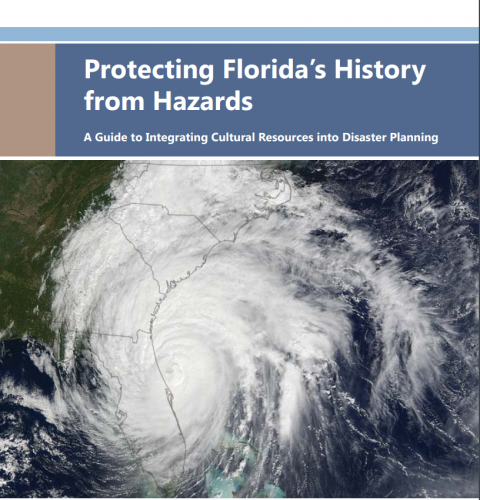
Ankersen and his team recently partnered with the National Park Service to publish a guidebook titled, “Protecting Florida’s History from Hazards: A Guide to Integrating Cultural Resources Into Disaster Planning.” The book outlines four new policy recommendations to increase the resilience of cultural resources in Florida.
The recommendations include:
- Incorporating cultural resources into the state’s emergency management framework
- Incorporating emergency management into the state’s historic preservation framework
- Incorporating cultural resources into actions under the National Flood Insurance Program
- Addressing hazard mitigation for cultural resources in local comprehensive planning
“At the state level, cultural resources needs to have a seat at the pre-disaster emergency management table,” Ankersen said.
“Otherwise you could end up with post-disaster staging areas and debris piles on top of sacred places.”
Taking measures to preserve Florida’s cultural resources is also good for the economy.
A 2010 study found that preservation related activities had an estimated $6.3 billion impact in Florida between 2007 and 2008. About half of all Florida tourists visit a historic site during their trip.
But, Nettles said we should be careful to not just focus on those big, widely recognized landmarks.
“I think that places like Fort Jefferson or Castillo de San Marcos get more attention because they are major heritage tourism sites. However, the places that make up a community’s cultural landscape are also important because they contribute to a community’s identity, memory, and sense of place,” Nettles said.
“People grieve when these places are lost.”
Historical and cultural resources provide a constant in times of uncertainty, Hylton said.
“This is humankind’s greatest collective challenge to date, as far as I’m concerned,” Hylton said.
“Change is hard. We’re going to need that kind of continuity with the past as we move into this very uncertain future.”
Get Involved
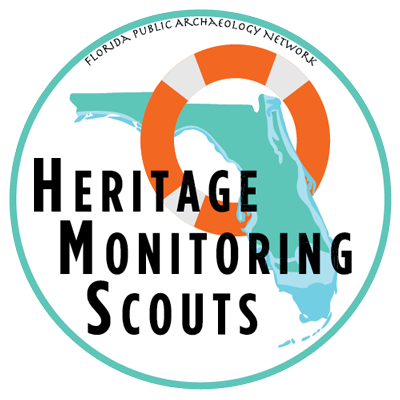
The Florida Public Archaeology Network is actively seeking Heritage Monitoring Scouts to track changes to archaeological sites at risk, particularly those impacted by climate change in the form of erosion and sea level rise. To enroll in the program, visit: Heritage Monitoring Scouts
FPAN is also hosting a Tidally United Summit that focuses on the impact of sea-level rise on archaeological and cultural resources August 15-17 in Pensacola. Registration is $40. For more information, visit: 2019 Tidally United Summit
To learn more about the preservation of cultural resources in Florida, visit:
- Florida Public Archaeology Network
- Florida Division of Historical Resources
- Florida Trust for Historic Preservation
The Florida Museum of Natural History also has a new free exhibit titled, “Our Changing Climate: Culture at Risk,” that offers a glimpse of how climate change affects important cultural sites. The exhibit also features an iPad with NASA’s Climate Time Machine that showcases some of the effects of Earth’s changing climate over time.
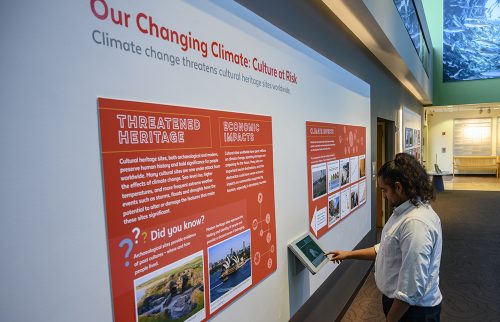
Learn more about the exhibit at: Our Changing Climate: Culture at Risk